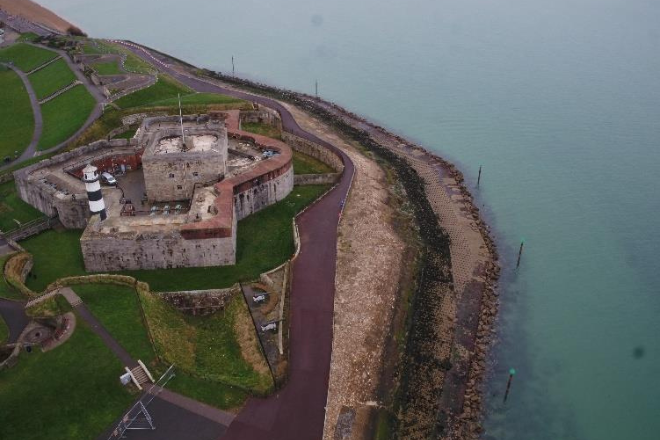Get updates from The Developer straight to your inbox Yes, please!
A brand-new seafront for less than a footballer’s wages
It’s not an easy task to stretch the flood defence grants but with an integrated team, you can get creative and maximise the benefits of the results, writes Kimberley France
With six new frontages, historic landmarks and 10,000 homes and livelihoods to protect from a 1-in-200-year flood event, the Southsea Coastal Defence project was never going to be simple.
Reflecting on the project at Festival of Place: Social Impact last week, both Sophie Thompson, Director, LDA Design and Chris Koster, Southsea Coastal Scheme’s programme manager believe an integrated design team was critical to the success of the project. LDA Design was a proud supporter of the event which brought together experts to share ways to maximise social impact during the delivery of projects.
“A key takeaway is that an integrated delivery team – one that continues to challenge each other, respect each other’s specialisms and drive forward towards a common goal and vision – really made this project,” Koster says.
Despite coastal communities welcoming investment, there is a fear of change around the loss of views and cultural heritage from seafront protection. Both professionals stress that whilst it’s not an easy task to stretch the flood defence grants, by maximising opportunities, you can get creative with the results.
Through the integrated model of design team, they’ve been able to create designs that satisfy residents while meeting requirements – an approach they call a ’place solution to an engineering problem’. With consultation from four fulltime community engagement officers, learnings point towards an engineering solution that is appropriate for both technical and social needs. "It’s not just a corporate team who don’t understand the people or the area," Thompson remarks.
Taking a deep dive into one of the frontages, Thompson explains how an integrated design team driven by LDA Design finds solutions for embracing and enhancing the current spaces and heritage; “The first task is around listening, building trust with the community and stakeholders, and then co-developing solutions to get a result that people are now supporting.”
Koster backs this new delivery model by expressing that, with the team’s diversity, there is no lateral thinking, “We were actually able to incorporate how we worked with people and place and community right from the get-go. It wasn’t an afterthought. It wasn’t a bolt on. It was integrated into our delivery and integrated into our design.”
Problem solving as a team saved the scheme millions of pounds whilst assimilating social importance by reinstating heritage and creating spaces for leisure and play. The fourth frontage went from an £8.8m scheme with a 500m by 30m long sheet pile wall to a large split view seating area, saving 10% of the schemes budget. There’s old Victorian shelters now at the centre of the walkways and some key archaeological finds that have been rescued and preserved all due to the incorporation of the likes of Wessex Archeology and the Environmental Agency into the design process.
Thompson and Koster both admit it hasn’t been an easy task. The integrated team means that there’s a need for designers that can propose technical, not naïve, solutions but also engineers who are enlightened around why a design may not work for a community. Getting a range of perspectives around the table, and with improved communication and technical understanding, they feel integration is a ‘golden standard’ by which future projects should work.
Find out more Watch the talk in the video above and download the slides or read our previous coverage
Sign up to our newsletter
Get updates from The Developer straight to your inbox
Thanks to our organisation members
© Festival of Place - Tweak Ltd., 124 City Road, London, EC1V 2NX. Tel: 020 3326 7238




